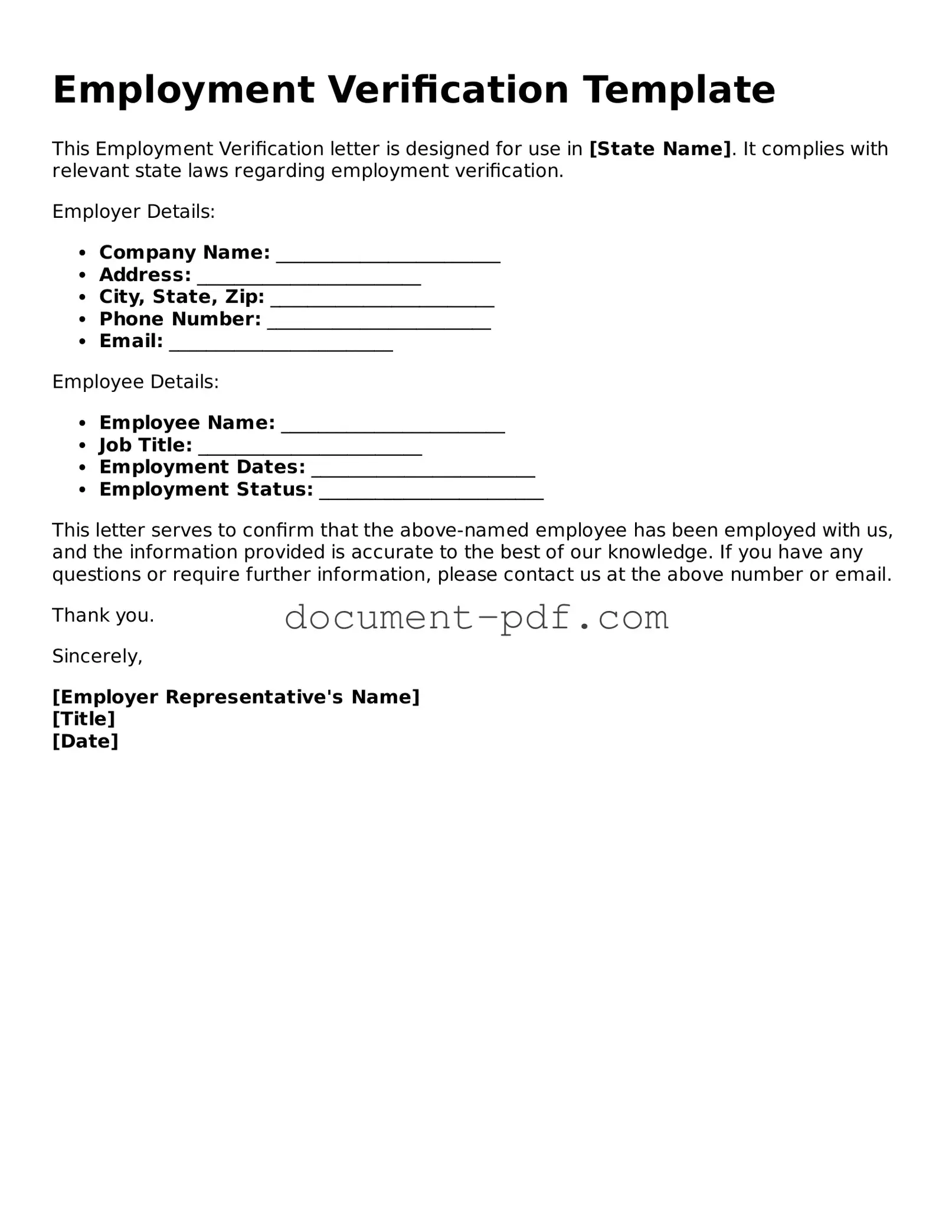The Employment Verification form serves a critical role in confirming a person's employment status, but several other documents fulfill similar functions. One such document is the Pay Stub. A pay stub provides detailed information about an employee's earnings, deductions, and net pay for a specific period. Employers often issue pay stubs regularly, making them a reliable source for verifying employment and income. While the Employment Verification form may request a signature from an employer, a pay stub can serve as a straightforward proof of employment without needing additional verification steps.
Another document closely related to the Employment Verification form is the W-2 Form. Employers issue W-2 Forms annually to report an employee's wages and the taxes withheld from their paychecks. This document is particularly useful for verifying income over a longer period, such as a year, rather than just a specific pay period. Like the Employment Verification form, the W-2 is an official document that can be used by lenders or other entities to confirm employment status and income levels.
Reference Letters are also similar to Employment Verification forms. These letters are typically written by a current or former employer to vouch for an employee's work history, skills, and character. While the Employment Verification form focuses on confirming employment details, reference letters provide a more personal touch by offering insights into the employee's contributions and work ethic. Both documents can enhance a job applicant's profile during the hiring process.
Understanding the implications of a Power of Attorney document is essential for effective decision-making in both personal and financial matters. It empowers someone to act on your behalf, making it a vital tool for future planning.
The Job Offer Letter is another document that shares similarities with the Employment Verification form. When a candidate receives a job offer, the employer usually provides a letter outlining the position, salary, and other employment terms. This document serves as proof of employment once the candidate accepts the offer. While the Employment Verification form may be used later to confirm ongoing employment, the job offer letter serves as an initial verification of the employment agreement.
Pay Verification Letters are also akin to Employment Verification forms. These letters are typically issued by employers to confirm an employee's salary and employment status for various purposes, such as applying for loans or rental agreements. While the Employment Verification form may focus on job title and duration, a Pay Verification Letter specifically emphasizes salary details. Both documents aim to provide assurance about an individual's employment situation.
Lastly, the Employment Contract shares similarities with the Employment Verification form. An employment contract outlines the terms and conditions of employment, including job responsibilities, salary, and duration of employment. While the Employment Verification form is often used to confirm employment after the fact, the employment contract serves as a foundational document that establishes the employment relationship. Both are essential in validating an individual's work status and agreement with an employer.
